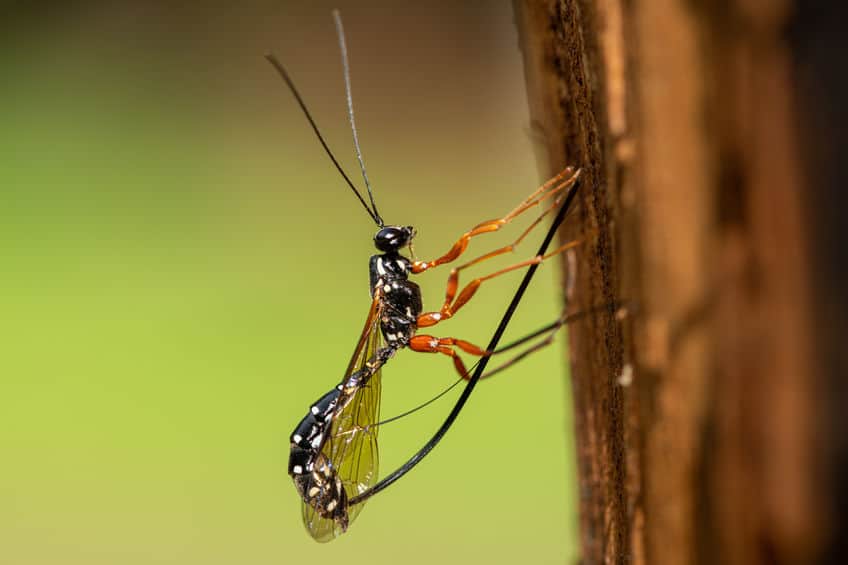The sabre wasp, Rhyssa persuasoria, is found across Europe and North Africa. They are up to 1.5 inches (4 cm) long, excluding the ovipositor. It is a type of Ichneumon wasp.
Why is the sabre wasp’s ovipositor important?
Their ovipositor is longer than their bodies. The ovipositor is used for laying and inserting eggs. In many wasp species, it doubles up as a stinger. The ovipositor of the sabre wasp when fully extended is up to 1.57 inches (4 cm) long. They use their very long ovipositor to drill into wood where they deposit their larva. The sabre wasp is so named due to the long ovipositor which resembles the curved blade.

What do sabre wasps prey on?
The sabre wasp seeks out the grubs of other wood-boring insects and parasites them. The larva of these host species will be located deep in the wood for protection, but it isn’t enough to protect them from the sabre wasp. Once located they use their very long ovipositor to drill into the wood and deposit their eggs next to the host larva. When hatched they will consume the host larva alive. The larva of the sabre wasp will only emerge from the timber as a fully formed adult wasp. All the while they consume the host grub to provide the nutrients for their development. They prey on the larva of several species including the horntail sawfly (erroneously called a wood wasp) and some longhorn beetle species.
How do sabre wasps find their prey?
You may be wondering how they are able to locate the larva of insects buried so deep in the wood. The answer is that they crawl across likely sites and use their antennae to pick out the chemical scent of the sawfly or longhorn beetle larva. Once detected they may attempt a few probe drills before drilling into the site where the host larva is found. It takes an hour or so for them to drill to the depths required. They can then paralyze the located grub by stinging it. Once paralyzed it is sitting prey for the sabre wasps own larva to consume alive.
How can the sabre wasp’s ovipositor drill into wood?
Just how these wasps are able to drill into wood was answered by the discovery that their ovipositors are actually lined with manganese which provides the strength needed to penetrate the wood. It also makes up to 10% of the bodyweight of the wasp. (source)
Are sabre wasps dangerous?
Sabre wasps are harmless to humans. The sabre wasp while capable of injecting venom into its prey has not evolved to sting predators (source). Adults survive on nectar primarily from sources such as pine needles and honeydew from aphids. The aphids which feed on sap produce honeydew as a side product that is sought after by many insects due to its sweetness. Some ant species even farm aphids for their honeydew.
